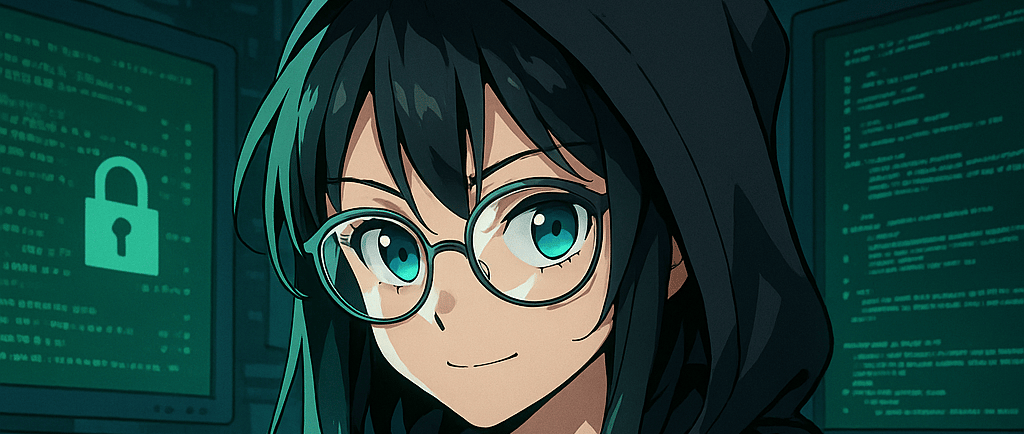
Code, Cryptics, and Controversy: The Enigma of Gigabyte
Female hackers that intrigue me
Shane Brown
6/6/20253 min read


Code, Cryptics, and Controversy: The Enigma of Gigabyte
In the shadowy, often enigmatic world of cybersecurity, some individuals become legends, not for the notoriety they seek, but for the mysterious trails they leave behind. Kimberley Vanvaeck, known by her elusive handle "Gigabyte," remains one of the hacking community's most fascinating, yet least understood figures. Her story is not of headline-grabbing attacks or chaotic disruptions, but rather a quieter rebellion—a whisper in the digital darkness that has intrigued investigators and peers alike.
Emerging from Belgium's underground hacking scenes in the early 2000s, Vanvaeck's early exploits carved out her reputation not through brute force or destructive intent, but via carefully orchestrated malware that defied conventional detection methods. Unlike her contemporaries, Kimberley crafted elegant, almost artistic code, often leaving cryptic clues or poetic signatures within her software, challenging the cybersecurity community to follow her breadcrumbs.
Vanvaeck's real moment of infamy came with her creation of sophisticated viruses such as "Sharpei" and "Quis," both revolutionary in their stealth and efficiency. Sharpei in particular, which encrypted itself to avoid detection, baffled experts for months and reshaped how antivirus programs evolved. Yet, despite her groundbreaking achievements, Kimberley never sought the spotlight—her identity and motivations remained tightly guarded secrets.
Born in Mechelen, Belgium, in 1984, Vanvaeck's fascination with computers began at the tender age of six when she started programming on a Commodore 64. By 14, she was writing viruses, viewing it as a form of digital art and a challenge to conventional programming norms. She became associated with underground groups like Metaphase VX and Coderz, contributing to e-zines and developing a reputation for her technical prowess.
Her most infamous creation, the "Sharpei" virus, emerged in 2002. Sharpei was groundbreaking as the first virus written in C#, targeting Microsoft's .NET framework. It propagated via email, masquerading as a Windows update, and demonstrated advanced techniques in self-encryption and evasion. Vanvaeck described her work as a proof-of-concept, aiming to showcase the capabilities of female programmers in a male-dominated field.
Her activities caught the attention of Graham Cluley, a security expert at Sophos, leading to a public dispute. In response to Cluley's comments about virus writers, Vanvaeck created several viruses that targeted him directly, including "Quis" and "Coconut." These actions, while intended as statements, eventually led to her arrest in 2004 by Belgian authorities on charges related to computer data sabotage.
Following her legal troubles, Vanvaeck shifted her focus towards formal education and professional development. She earned a Master's degree in Industrial Sciences with a specialization in Electronics-ICT from the Erasmushogeschool in Brussels. Her academic journey included international experience, such as a project on multilayer traffic engineering at the Hanoi University of Technology.
Today, Vanvaeck applies her extensive knowledge and experience as an IT advisor at the Erasmushogeschool Brussels. Her transition from a controversial figure in the hacking community to a respected professional underscores the complex interplay between youthful experimentation and mature expertise.
Authorities, driven by intrigue and frustration, painted Kimberley Vanvaeck as a digital phantom. Speculation grew around her motives; was she a malicious disruptor, an activist with an ethical agenda, or merely a gifted individual challenging herself against the world's most sophisticated defenses?
Today, the cybersecurity community continues to study Vanvaeck’s techniques, marveling at her intricate coding abilities and subtly rebellious spirit. She remains a vivid example of how cyber expertise can challenge conventional notions of notoriety and anonymity, leaving a legacy defined not by visibility, but by intrigue and intellectual mastery.
Kimberley Vanvaeck, "Gigabyte," reminds us that in the realm of cybersecurity, the most fascinating stories are often those that remain just out of reach.
Further Reading
For those interested in delving deeper into Kimberley Vanvaeck's story and the broader context of her work, the following resources provide comprehensive insights:
Innovate
Building websites and securing your digital presence.
Connect
Support
Info@sinistergatedesigns.com
© Sinister Gate Designs, LLC 2025. All rights reserved.
